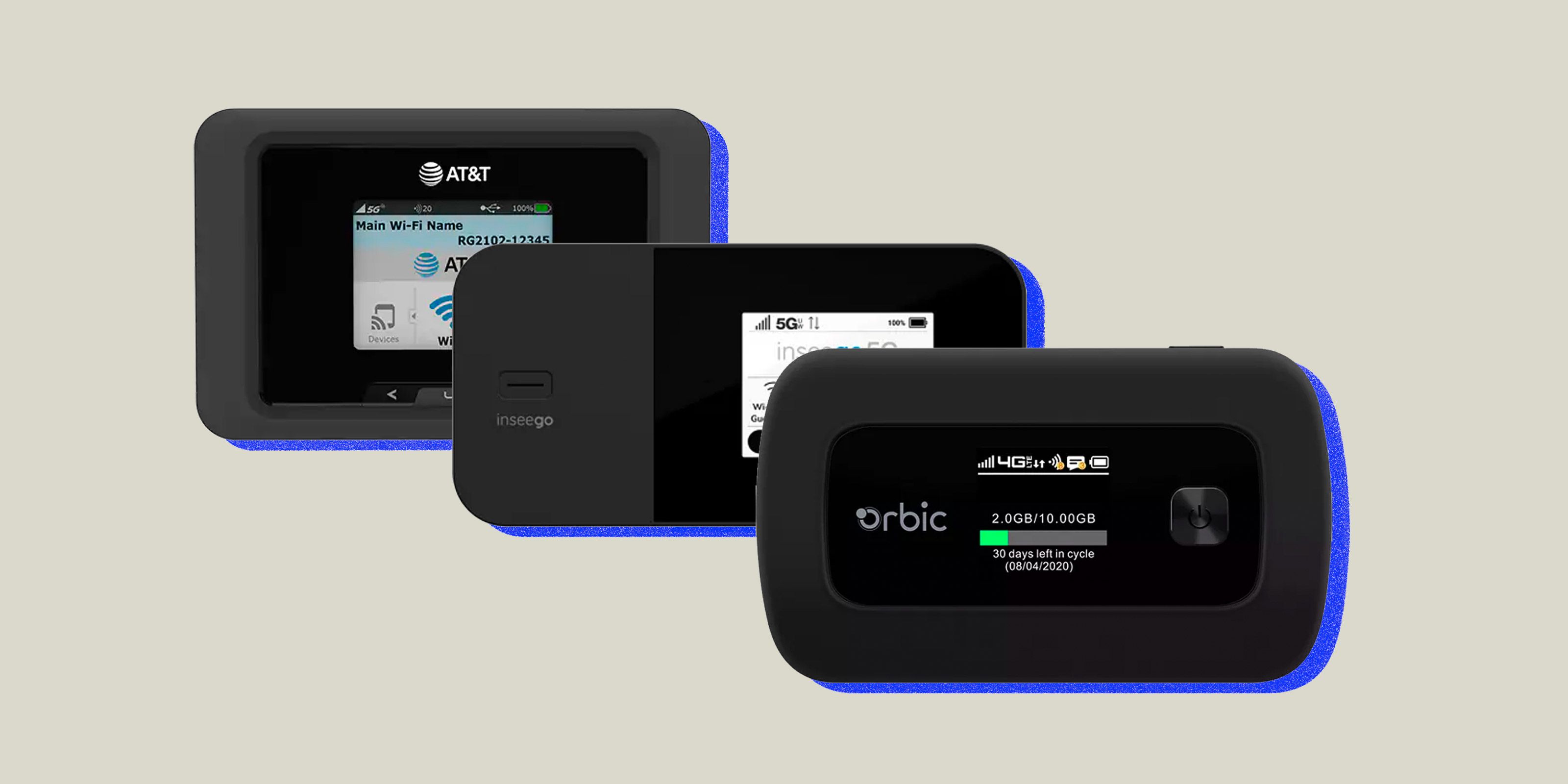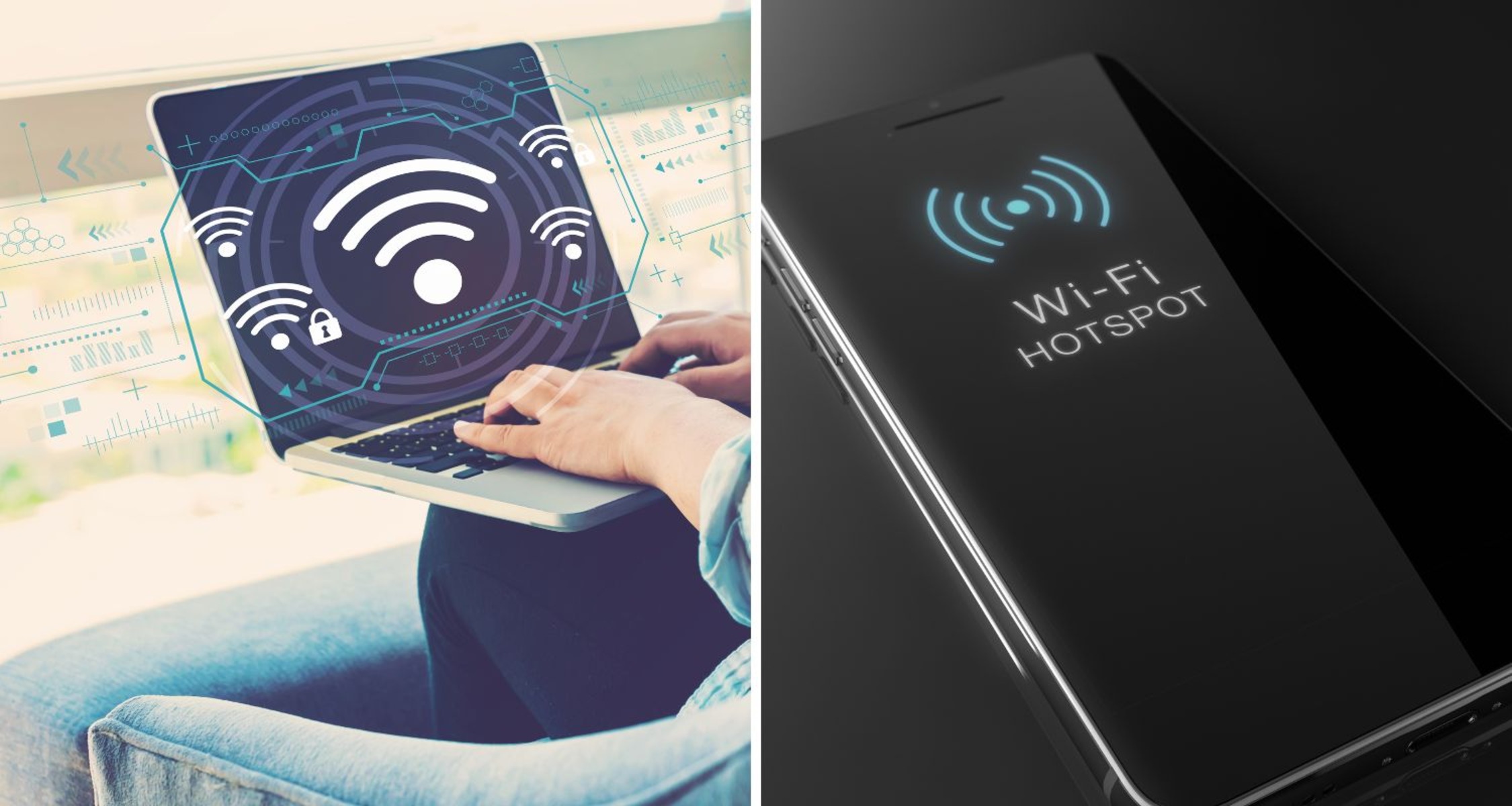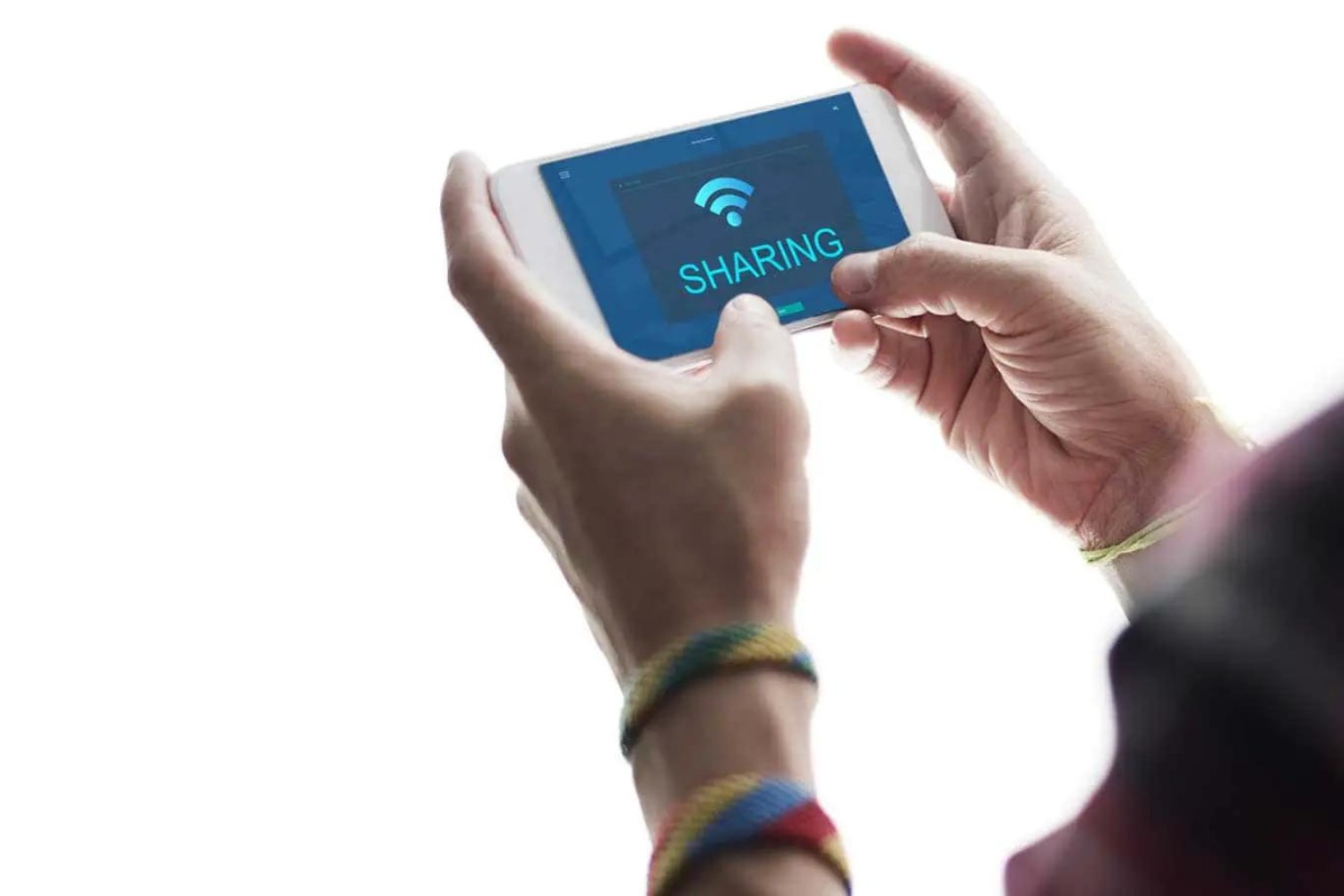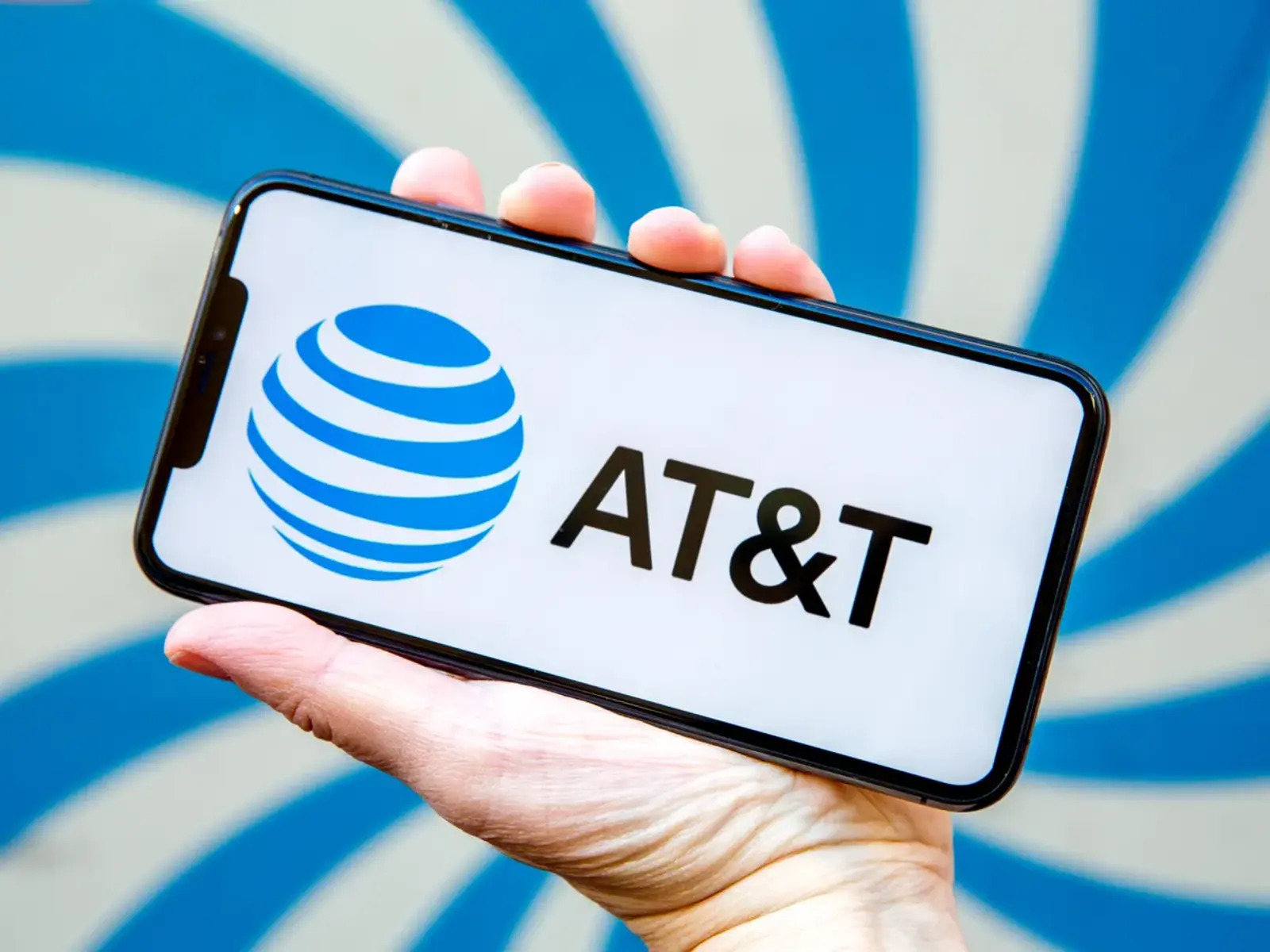Introduction
Hotspot usage has become an integral part of our digital lifestyles, offering the convenience of connectivity on the go. Whether it's for work, entertainment, or staying connected with loved ones, the ability to create a Wi-Fi hotspot from your mobile device has revolutionized the way we access the internet. However, with this convenience comes the need for understanding and managing data usage effectively.
In this comprehensive guide, we will delve into the intricacies of estimating hotspot data usage and duration. By gaining insight into the factors that influence data consumption and learning how to estimate the duration of your hotspot usage, you can make informed decisions to optimize your data usage and avoid unexpected overage charges.
Understanding the nuances of hotspot data usage is crucial for individuals and businesses alike. Whether you're a remote worker relying on your hotspot for daily tasks, a traveler needing internet access on the go, or a business owner seeking to provide Wi-Fi for customers, having a clear understanding of hotspot data usage can help you make the most of your data plan while avoiding unnecessary expenses.
So, let's embark on this journey to unravel the mysteries of hotspot data usage and duration estimation. By the end of this guide, you'll be equipped with the knowledge and strategies to manage your hotspot data usage effectively, ensuring seamless connectivity without exceeding your data limits.
Understanding Hotspot Data Usage
Hotspot data usage refers to the amount of data consumed when devices connect to the internet through a mobile hotspot. It's essential to comprehend how various activities impact data usage to effectively manage and optimize your data consumption. Here's a breakdown of common activities and their corresponding data usage:
-
Browsing the Web: When using a hotspot for web browsing, the amount of data consumed varies based on the websites visited and the content viewed. Generally, simple web pages with text consume minimal data, while multimedia-rich websites with videos and high-resolution images can significantly increase data usage.
-
Streaming Media: Streaming content, such as music and videos, consumes a substantial amount of data. For instance, streaming a high-definition movie can use several gigabytes of data within a single viewing session. It's crucial to be mindful of streaming quality and duration to avoid excessive data consumption.
-
Video Calls and Conferencing: Engaging in video calls or participating in virtual meetings through a hotspot can consume varying amounts of data based on the video quality and duration of the calls. High-definition video calls consume more data compared to standard-definition calls.
-
Online Gaming: Online gaming can utilize substantial data, especially for multiplayer games with continuous data exchange. The data usage can vary widely based on the specific game and the duration of gameplay.
-
Software Updates and Cloud Services: Automatic software updates and cloud-based services can consume significant amounts of data, particularly if multiple devices are connected to the hotspot and simultaneously downloading updates or syncing data.
Understanding hotspot data usage empowers users to make informed decisions about their internet activities. By being aware of the data consumption associated with different online tasks, individuals and businesses can effectively manage their data usage, avoid unexpected overages, and make the most of their mobile hotspot connectivity.
Factors Affecting Hotspot Data Usage
Several factors influence the amount of data consumed when using a mobile hotspot. Understanding these factors is crucial for effectively managing hotspot data usage and optimizing connectivity. Let's explore the key elements that can impact hotspot data consumption:
-
Activity Type: The nature of the online activities performed while connected to a hotspot significantly affects data usage. Streaming high-definition videos, engaging in video calls, and online gaming are data-intensive activities compared to basic web browsing or sending emails. Being mindful of the type and duration of activities can help control data usage.
-
Streaming Quality: The quality of media streaming, such as videos and music, directly impacts data consumption. Higher resolutions and bitrates result in increased data usage. Adjusting streaming quality settings based on available data allowances can effectively manage data usage without compromising the viewing experience.
-
Number of Connected Devices: The number of devices connected to the hotspot simultaneously influences data usage. Each connected device consumes data based on its online activities. Managing the number of devices connected and their data-intensive tasks can help regulate overall data usage.
-
Background Processes: Automatic software updates, cloud backups, and synchronization of data in the background can contribute to unexpected data consumption. Monitoring and controlling background processes on connected devices can prevent excessive data usage without the user's active involvement.
-
Content Downloading and Uploads: Uploading and downloading large files, such as documents, images, or videos, can significantly impact hotspot data usage. Managing file transfers and scheduling data-heavy tasks during off-peak usage periods can optimize data consumption.
-
Device Settings and Updates: The settings of the hotspot-enabled device, including system updates and app configurations, can influence data usage. Ensuring that devices are optimized for efficient data usage and regularly updating software to benefit from data-saving features is essential.
-
Network Conditions: The quality and stability of the cellular network providing the hotspot connection can affect data usage. Unstable or slow networks may lead to increased data consumption due to retransmissions and prolonged data transfer times.
Understanding these factors empowers users to make informed decisions when utilizing a mobile hotspot. By considering these elements and implementing data management strategies, individuals and businesses can effectively control data usage, avoid unnecessary expenses, and maintain seamless connectivity on the go.
Estimating Hotspot Duration
Estimating the duration of hotspot usage involves a combination of understanding data consumption patterns and making informed projections based on the intended online activities. By considering the factors that influence data usage and implementing data management strategies, individuals and businesses can effectively estimate the duration for which their mobile hotspot can provide connectivity.
To begin estimating hotspot duration, it's essential to assess the specific online activities that will be carried out while connected to the hotspot. Different activities consume varying amounts of data, and having a clear understanding of the nature and duration of these activities is crucial for accurate estimation. For example, streaming high-definition videos for an extended period will deplete data at a faster rate compared to basic web browsing or email correspondence.
Next, individuals can leverage their knowledge of their data plan's allotted data allowance to estimate hotspot duration. By dividing the total data allowance by the average data consumption per hour based on the planned online activities, users can gauge the approximate duration their hotspot can sustain connectivity before reaching the data limit. This estimation method enables proactive management of data usage and helps avoid unexpected data depletion during critical tasks.
Moreover, monitoring real-time data usage while connected to the hotspot provides valuable insights for estimating duration. Many mobile devices offer built-in tools or downloadable apps that track data usage, enabling users to observe the rate at which data is being consumed. By extrapolating the current data usage rate, individuals can project the remaining duration of hotspot connectivity, allowing for timely adjustments to online activities or data management settings.
Additionally, considering the number of devices connected to the hotspot and their respective data-intensive tasks is integral to accurate duration estimation. Each connected device contributes to overall data consumption, and understanding the combined impact of multiple devices facilitates more precise estimations. Implementing device-specific data management measures and coordinating data-heavy tasks across connected devices can extend the duration of hotspot connectivity.
By incorporating these estimation approaches and proactively managing data usage, individuals and businesses can make the most of their mobile hotspot while avoiding data overages and interruptions in connectivity. Estimating hotspot duration empowers users to plan their online activities effectively, ensuring seamless connectivity for work, leisure, or essential communication while maximizing the utility of their data plans.
Tips for Managing Hotspot Data Usage
Managing hotspot data usage effectively is essential for optimizing connectivity, avoiding unexpected overages, and making the most of available data allowances. By implementing practical strategies and leveraging data management techniques, individuals and businesses can maintain seamless connectivity while controlling data consumption. Here are valuable tips for managing hotspot data usage:
-
Monitor Data Usage: Regularly monitoring data usage through built-in tools or dedicated apps on the hotspot-enabled device provides insights into consumption patterns. By staying informed about data usage trends, users can proactively adjust their online activities and settings to align with their data allowances.
-
Leverage Data-Saving Features: Many devices offer data-saving features that can be activated to optimize data usage. These features may include data compression, low-data mode for specific apps, and background data restrictions, effectively reducing overall data consumption without compromising the user experience.
-
Set Data Usage Alerts: Utilize data usage alert settings to receive notifications when approaching predefined data thresholds. Setting alerts allows for timely adjustments and prevents unexpected data depletion, empowering users to manage their data usage proactively.
-
Optimize Streaming Quality: Adjusting the streaming quality for media content, such as videos and music, can significantly impact data usage. Lowering the streaming resolution and bitrate conserves data while still enabling enjoyable media consumption.
-
Schedule Data-Intensive Tasks: Scheduling data-heavy activities, such as software updates and large file transfers, during off-peak hours can optimize data usage. By strategically planning these tasks, users can minimize the impact on their data allowances while maintaining connectivity for essential activities.
-
Limit Background Processes: Controlling background processes, such as automatic app updates and cloud synchronization, helps prevent excessive data consumption. Managing these processes ensures that data is utilized primarily for active, user-initiated tasks rather than background operations.
-
Educate Connected Users: In scenarios where multiple devices are connected to the hotspot, educating users about data management best practices can contribute to collective data conservation. Encouraging responsible data usage among connected individuals fosters a collaborative approach to managing hotspot data consumption.
-
Explore Data-Saving Apps: Investigate the availability of data-saving apps designed to optimize data usage across various online activities. These apps may offer features such as data compression, ad blocking, and intelligent data management, further enhancing the efficiency of hotspot data usage.
-
Consider Alternative Connectivity Options: When feasible, exploring alternative connectivity options, such as public Wi-Fi networks or dedicated broadband connections, for data-intensive tasks can alleviate reliance on the mobile hotspot and preserve data for essential use.
By incorporating these tips into their data management practices, users can effectively manage hotspot data usage, maximize the utility of their data plans, and sustain seamless connectivity for work, leisure, and communication needs.
Conclusion
In conclusion, understanding and effectively managing hotspot data usage is paramount in today's digital landscape. By gaining insights into the factors influencing data consumption, estimating hotspot duration, and implementing practical data management strategies, individuals and businesses can optimize connectivity while staying within their data limits.
The comprehensive understanding of hotspot data usage allows users to make informed decisions when engaging in various online activities. Whether it's streaming media, participating in video calls, or performing essential work tasks, being mindful of data consumption patterns empowers users to align their activities with their data allowances.
Estimating hotspot duration provides a proactive approach to managing data usage. By leveraging knowledge of data consumption patterns, the number of connected devices, and real-time data usage monitoring, individuals can make accurate projections regarding the duration for which their hotspot can sustain connectivity. This proactive approach enables users to plan their online activities effectively, preventing unexpected data overages and interruptions in connectivity.
Furthermore, the implementation of data management tips and techniques allows users to maintain control over their data usage. From leveraging data-saving features and optimizing streaming quality to scheduling data-intensive tasks and educating connected users, these strategies contribute to efficient data utilization and prolonged hotspot connectivity.
By embracing these principles and integrating them into their data management practices, individuals and businesses can harness the full potential of their mobile hotspots. Seamless connectivity, effective data usage management, and avoidance of unnecessary expenses characterize the benefits of understanding and managing hotspot data usage.
In essence, navigating the realm of hotspot data usage involves a blend of awareness, proactive planning, and the application of practical strategies. By embracing these principles, users can unlock the full potential of their mobile hotspots, ensuring consistent connectivity for work, leisure, and essential communication needs while optimizing their data usage and staying within their data limits.

























